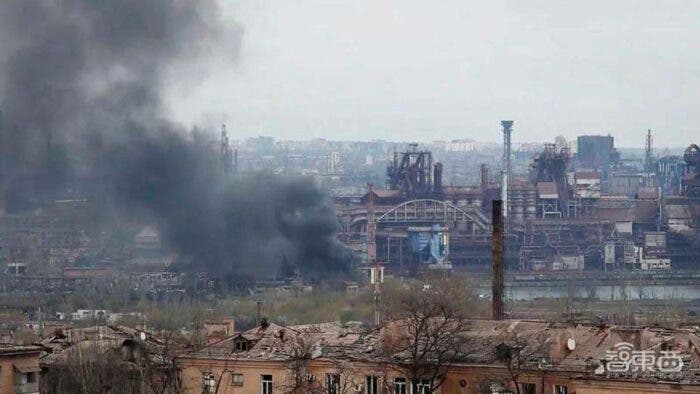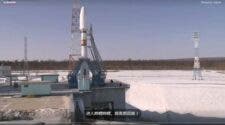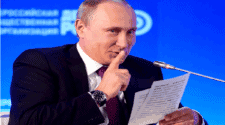Recently, the Russian Ministry of Industry and Trade announced that it will restrict the export of rare gases such as neon, krypton, and xenon by the end of 2022. The export of these gases must be licensed by the Russian government. According to Russian media reports, Russia is set to launch neon gas sanctions against “unfriendly” countries. Since the outbreak of the Russian – Ukrainian war, the prices of rare gases such as neon, krypton, and xenon have all risen sharply. In fact, the price of high-quality neon has risen more than tenfold. This Monday, A-share special gas concept stocks generally rose, among which Huate Gas rose nearly 15%. The stock prices of special gas suppliers such as Haohua Technology, Heyuan Gas, and Jinhong Gas all rose.
Read Also: Russia bans the export of inert gases such as neon and helium

At the same time, the Russian – Ukraine war and the subsequent sanctions against Russia by many countries have promoted the expansion and layout of many Chinese players. Since March this year, key Chinese suppliers released new production expansion and layout plans. These Chinese suppliers include Walter Electronics, Jinhong Gas, Kemet Gas, and Heyuan Gas.
In the current global electronic specialty gas market, industry leaders such as American Air Chemical Group, French Air Liquide Group, Japan Dayo Nippon Acid Co., Ltd., and American Linde Group occupy more than 80% of the market share. The Chinese semiconductor supply chain gas players are gradually expanding their market share. They are expanding from the lithography gas, silane, arsine, and other segments.
Ukrainian neon gas suppliers are part of the war – can only meet half of the global demand
Neon gas is a by-product of iron and steel refining, and its main origins are in Ukraine and Russia. The Russian steel industry sends the produced neon gas to Ukraine for purification and other operations. The high-purity rare gas (krypton, neon, xenon, fluorine, etc.) mixed gas can be used as a lithography gas. This is a key material in the lithography process of semiconductor manufacturing. In addition, these noble gases can also be used in other links such as etching.
Ukraine’s major neon gas suppliers include Cryoin, Ingas, and Iceblick. Their main production bases are located in Mariupol, Odessa, and other places in Ukraine. Overall, Ukraine supplies 70% of the world’s neon gas, 40% of its krypton gas, and 30% of its xenon gas. In the Russia – Ukraine crisis, Mariupol and Odessa have been major targets for Russia.
After the outbreak of the Russian – Ukraine war, the production and sales of Ukrainian gas suppliers were greatly affected. Some companies’ production bases even became the core battlefield of the war. Before the conflict, Ingas was producing 15,000 to 20,000 cubic meters of neon gas per month. According to Nikolay Avdzhy, Ingas’ chief commercial officer, Inga’s main customers are in South Korea, China, the US, and Germany. About 75% of the neon gas is used in the chip industry.
Gizchina News of the week
Cryoin’s business development director, Larissa Bondarenko, said that the company produces about 10,000 to 15,000 cubic meters of neon gas per month in Odessa, Ukraine. However, the company closed in February and operations had to stop on February 24th to ensure the safety of employees.
Two Ukrainian companies supply over 45% of the world’s semiconductor-grade neon gas
According to statistics, the two Ukrainian gas companies supply 45% – 54% of the world’s semiconductor-grade neon gas. Some analysts say that if Ukrainian neon gas producers continue to close, the country’s neon gas production capacity will not exceed 270 tons in 2022. Although Ukraine’s neon gas supply capacity has declined significantly, the current shortage of neon gas and rising costs have not yet had a key impact on chip manufacturing. This is because back in 2015, there was a round of rare gas surge. Thus, there were warnings for companies to be alert for any eventualities.
As early as 2015, the conflict between Ukraine and Russia caused the price of neon gas to rise all the way. At the time, the price of neon gas rose by 600%. This is a greater impact on the semiconductor supply chain. After 2015, semiconductor companies have generally taken open-source and throttling measures for neon gas supply. While reducing the amount of neon gas, they have turned to a diversified supply model.
In terms of throttling, Cymer and Gigaphoton, the two major light source suppliers for lithography machines, reduced the use of neon gas in a targeted manner after the price increase of neon gas in 2014 and 2015. They also developed neon gas recovery and recycling technology, reducing neon consumption by 97%.
Russia – Ukraine conflict has no short-term impact
In terms of open-source, SK Hynix, Intel, ASML, TSMC, Micron, and other semiconductor industry chain companies emphasize that they have multiple sources of neon gas supply. After the outbreak of the Russian – Ukrainian war, these manufacturers all claim that they had a lot of inventory. They believe that the interruption of supply in Ukraine and Russia would not affect their production in the short term.
However, some people in the industry pointed out that the rare gas inventory of most companies is less than six months. If the Russian-Ukrainian war continues for too long, the shortage of neon gas will still cause damage to the supply of chips.
According to the Zheshang Securities Research Report, on June 2, 2022, the market price of krypton in China hit 54,500 yuan/cubic. The market price of xenon is 543,000 yuan/cubic while the market price of neon is 18,000 yuan/cubic. Comparing these prices with before the war, there is an increase. Xenon gas price increased 2 – 3 times. The price of neon before the war is only about 1500/cubic.
Conclusion: countries are competing for semiconductors
The Russia – Ukraine conflict is affecting the entire technology industry. The United States, Europe, and other countries and regions have used their advantages in the field of chip design to impose sanctions on Russia’s semiconductor and technology industries. Russia has used its advantages in supply such as rare gases to counteract, thus affecting the entire semiconductor supply chain.
For China’s semiconductor supply chain, independence and safety are still the key to development. This shortage of neon gas may become an opportunity for Chinese specialty gas suppliers to accelerate their entry into the fab production line.





